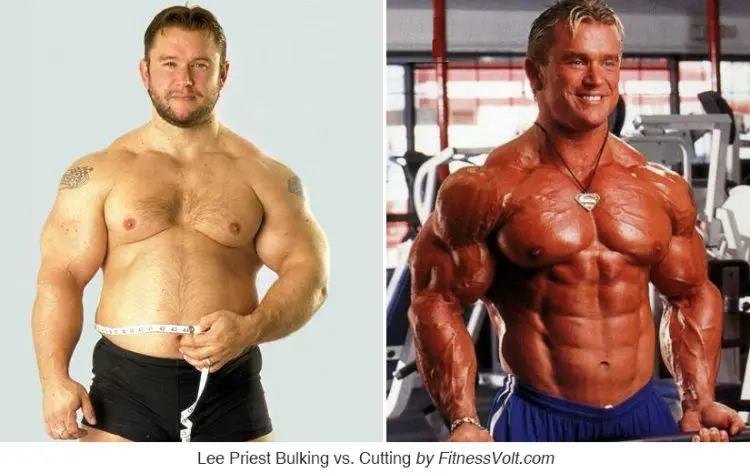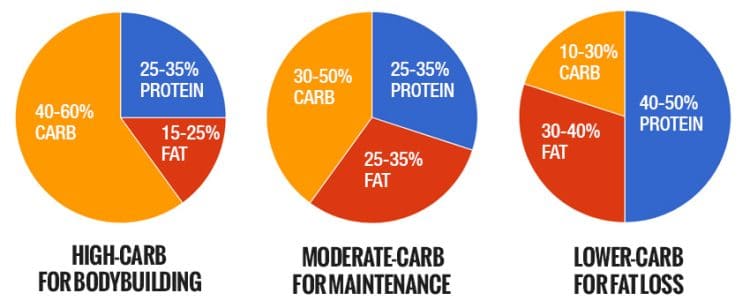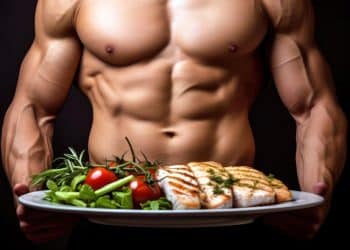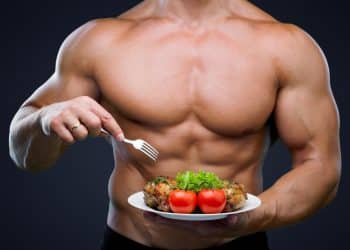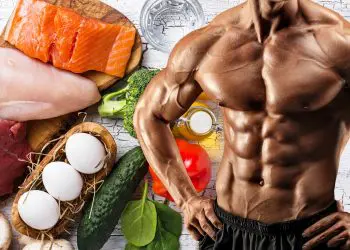Beginner bodybuilders often grow like weeds. Every workout produces almost noticeable muscle growth. That first year or so of training has an almost magical effect on your body, as working out is such a novel experience.
Sadly, newbie gains don’t continue forever, and your progress will soon start to grind to a halt. To continue adding muscle to your frame, you’ll need to break out some bigger guns and start training smart as well as hard.
Training methods better suited to more advanced lifters include drop sets, supersets, forced reps, and negatives. You can read more about the most intense bodybuilding training methods here.
Another way to rekindle your progress is to do a bulking cycle. Bulking involves eating more and training primarily for strength. This provides your body with an abundance of what it needs to grow.
After bulking, most lifters then make the switch to a cutting cycle, during which they shed unwanted fat and get ripped.
And on it goes – bulk for a couple of months, cut for a couple of months, gradually getting stronger and more muscular.
Level Up Your Fitness: Join our 💪 strong community in Fitness Volt Newsletter. Get daily inspiration, expert-backed workouts, nutrition tips, the latest in strength sports, and the support you need to reach your goals. Subscribe for free!
Bulking is a pretty straightforward process, but you still need to make an important choice when deciding what to eat: Should you do a dirty bulk or a clean bulk?
In this article, we explain the differences and weigh up the pros and cons, so you can decide which one is the best choice for you.
What is Bulking?
Before we take a closer look at dirty bulking vs. clean bulking, let’s just briefly revisit bulking in general.
Bulking is the process of building muscle as fast as possible by eating more and training harder. This used to be a seasonal undertaking, and bodybuilders would bulk during the winter and then diet down ready for beach season in the summer.
Competitive bodybuilders usually bulk on the off-season, so they show up bigger and better for the next round of shows.
Regardless of why you’re bulking, the aim is the same – to keep on building muscle from one year to the next.
The first part of bulking is diet. Bulking diets are very calorific, and you’ll need to consume anywhere between 500-1000 extra calories per day. This could mean eating an extra meal or two, eating more snacks, using a mass gainer shake, or simply eating more at every meal.
Training-wise, bulking workouts usually focus on building strength across the main compound lifts, including the bench press, deadlift, squat, overhead press, and bent-over row.
Typically, these exercises are done for lower reps and with heavier weights, such as five sets of five with 85% of your 1RM. These exercises would then be supplemented with additional bodybuilding exercises using lighter weights and more moderate weights. In essence, training for bulking is powerbuilding – a cross between powerlifting and bodybuilding.
Read more about powerbuilding here.
A bulk can last anywhere between a few weeks to several months. It really depends on how much muscle you want to gain and how much additional body fat you are prepared to tolerate. After all, because of the caloric surplus, while bulking produces noticeable gains in muscle mass, you’ll also gain body fat.
After bulking, most bodybuilders then switch to a cutting plan and start shedding that unwanted fat while trying to preserve as much muscle mass as possible. They may then maintain their newly improved lean and muscular physique for a while or go straight back to bulking.
Cycle by cycle, our bulking bodybuilder will gradually build more muscle mass, transforming themselves from skinny newbie to mass monster – or that’s usually the plan, anyway!
When it comes to deciding what to gain weight and build muscle, you have two main choices to make – a dirty bulk or a clean bulk.
What is Dirty Bulking?
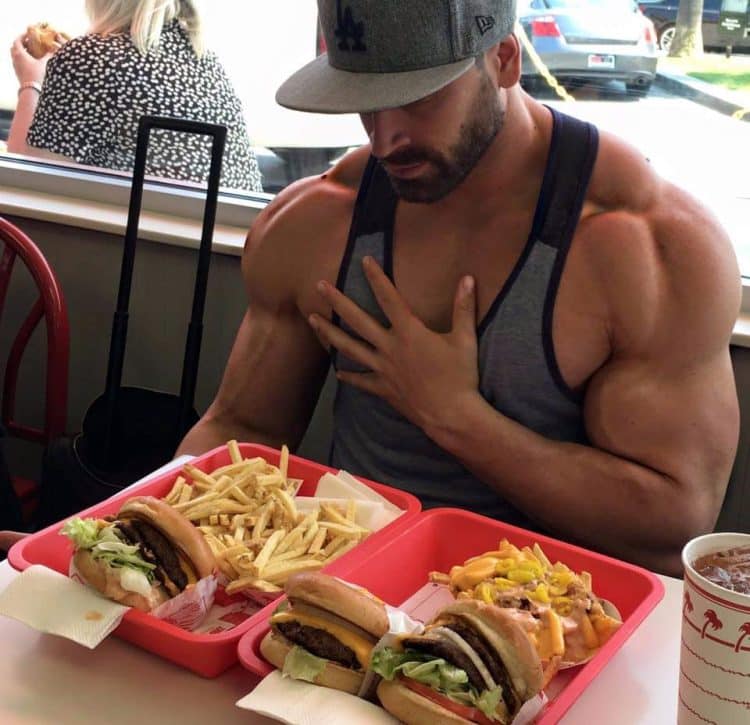
One of the best (and most appealing) aspects of bulking is that you get to eat lots of food. Unlike cutting, you’ll never be hungry. In fact, you may get fed up with having to eat so much and probably find yourself eating despite NOT being hungry.
With a dirty bulk, some if not all of the food you eat will be junk food. Junk food contains a lot of calories, and that may be advantageous during a bulk. You can eat takeout meals, processed foods, candy, and pretty much any other food that’s usually off the menu for people who work out.
For example, you might start your day with Pop-Tarts and a huge protein shake, have a half-pound burger and fries for lunch, fried chicken for dinner, and snack on Snickers during the day.
So long as you hit your macros, it’s all good!
And speaking of macros, the recommended levels during a dirty OR clean bulk are:
- 30-35% of your calories should come from protein
- 45-60% of your calories should come from carbohydrates
- 15-30% of your calories should come from fat
Dirty bulking benefits
Some of the benefits of dirty bulking include:
Calorie-dense foods – bulking invariably means consuming many more calories than usual. This can be hard if you eat low-calorie foods. You may feel full up and even unable to consume enough calories per day.
Dirty bulking foods are usually very calorie-dense and make it far easier to consume sufficient calories. For example, a large takeout burger and fries could provide you with 25-30% of your daily requirement for protein and calories in one easy-to-eat meal.
Convenience – because junk food is so readily available, you should have no problem finding food to eat for dirty bulking. Instead, you can eat on the go, eat in restaurants, and even fuel your bulk at gas stations. You have no excuse for missing a meal on a dirty bulk. This makes it an attractive option for anyone who can’t or has limited time to cook.
Cheap – junk food is often very cheap, so it’s arguably the most cost-effective way to bulk. You get a lot of calories per dollar when you eat at chain takeout restaurants.
Fun– let’s be honest, dirty bulking can be enjoyable. All the foods that are typically off the menu for health-conscious people are back on. So long as you hit your macros, you can eat whatever you like without derailing your progress. If you enjoy eating junk food, a dirty bulk will be very appealing.
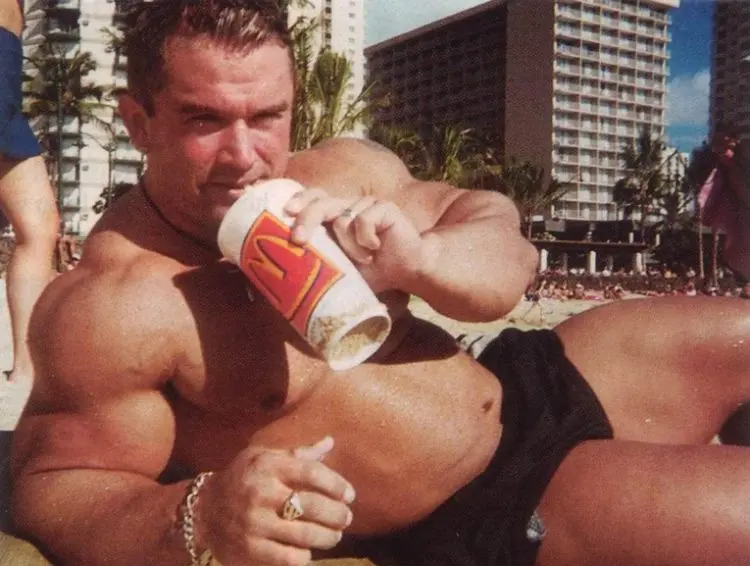
Dirty bulk drawbacks
While dirty bulking can work, there are drawbacks to consider too…
Level Up Your Fitness: Join our 💪 strong community in Fitness Volt Newsletter. Get daily inspiration, expert-backed workouts, nutrition tips, the latest in strength sports, and the support you need to reach your goals. Subscribe for free!
Health – no doctor is ever going to approve a diet that consists mainly of junk food. While the occasional takeout meal or candy bar won’t hurt you, eating junk food for several weeks or months could increase your risk of hypertension, diabetes, and heart disease.
You could even suffer from malnutrition because of a lack of vitamins and minerals. And low levels of fiber will undoubtedly affect your digestive health.
Fat gain – while some fat gain is inevitable during a bulk, you may gain more fat if you eat mostly junk food. Junk food is so calorically dense that it’s very easy to consume too much and gain more fat than you should.
Remember, after bulking comes cutting, and the more fat you gain during the bulk, the longer and harder it’ll be to diet it off.
Could make healthy eating less appealing – junk food is addictive, and switching from dirty bulking to a cutting diet will be much harder after mainly eating junk food for the last few months. Instead of a takeout breakfast burrito, you’ll be facing a plain egg white omelet and veggies, and dinnertime pizza will become grilled chicken and broccoli.
Knowing that this transition is coming could be enough for you to prolong your bulk or even avoid cutting altogether.
You may feel sluggish – eating a lot of junk food could leave you feeling sluggish, heavy, and without energy. Yes, you will be eating more than enough calories, but your body needs nutrients for energy too, namely vitamins and minerals.
In addition, a lot of junk food is high in sugar which creates energy spikes and dips. Those undulations can also affect your mood and focus. In short, you may not feel your energetic best during a dirty bulk.
What Is Clean Bulking?
Clean foods are generally less processed and more nutritionally complete than junk food. As such, they’re higher in vitamins, minerals, and fiber and lower in added fat, sugar, and artificial additives.
Most people would recognize clean foods as healthy and natural. Examples include vegetables, lean proteins, whole grains, nuts, legumes, and unprocessed dairy.
With a clean bulk, most of your meals should be made up of clean, unprocessed foods. This may mean you need to make your own meals and carry food with you so you won’t miss your next scheduled meal.
As with a dirty bulk, clean bulking involves eating more food than usual to create the required surplus of around 500-1000 calories per day. However, because clean foods often contain fewer calories than their dirtier counterparts, you may need to eat a greater volume of food to achieve the same caloric intake.
For example, on a clean bulk, you might have a four egg omelet with vegetables and brown rice for breakfast, grilled chicken, vegetables, beans, and wholemeal bread for lunch, a grilled steak, baked potatoes, green beans, and gravy for dinner, and fruit, nuts, beef jerky, yogurt, and cottage cheese as snacks.
Clean bulking benefits
Some of the benefits of clean bulking include:
Health – most clean foods are also good for your health. They contain an abundance of vitamins, minerals, and fiber, all of which your body needs to function correctly. You may even find your cardiovascular and digestive health improves because of the foods in your clean bulk.
Stable energy – clean foods are invariably low in sugar and release their energy relatively slowly. That means you should experience fewer peaks and dips in energy and performance. Your mood and focus should be more stable, too.
Less fat gain – you’ll still gain fat during a clean bulk, simply because of the number of calories you consume. However, you should find that you can control fat gain more easily and won’t accumulate as much. This will make cutting easier.
An easier transition to cutting – most cutting diets are built around clean foods. So, switching from a clean bulk to cutting should be as simple as eating less. With no significant changes to the foods you’re eating, this transition should be much smoother and easier to deal with.
Dirty bulk drawbacks
While clean bulking works, there are a few drawbacks to consider too…
The volume of food you’ll need to eat – while there are exceptions, most clean foods contain fewer calories than dirty foods. That means you’ll need to eat more, which could be a problem. If you feel full, you may not finish your meal and may even skip your next scheduled feed, failing to create the required calorie surplus.
Food availability – clean bulking invariably means being more selective about the food you eat. You won’t be able to buy your meals at takeouts or convenience stores. Instead, you may have to make all your meals and carry a food container with you, so you never miss a meal. While none of this will make clean bulking impossible, it could mean it is more trouble than it’s worth for some people.
Cost – clean foods are often more expensive than dirty foods. Eating clean means spending more on groceries and more time on food prep. This may be a problem for some would-be clean bulkers.
Boredom – if you love the taste of junk food, you may find clean bulking overly restrictive, and even boring. If you don’t enjoy the food you eat, you may choose to skip meals, and that means failing to hit your macro and calorie targets. Clean foods don’t have to be tasteless or dull, but if you prefer the taste of junk food, that could be enough to put you off.
Dirty Bulk vs. Clean Bulk – Which is Best?
From a long-term health perspective, a clean bulk is better than a dirty bulk. A dirty bulk may be easier, cheaper, and more convenient. Still, the price for that convenience could be a shorter lifespan.
Not convinced? Ask legendary bodybuilder and powerlifter CT Fletcher, who has had a string of heart problems he attributes to his cheeseburger consumption while bulking.
A clean bulk does require more effort and organization. Still, you’ll probably get better results, experience less fat gain, and feel more energetic too. Plus, the transition to cutting will be easier.
That’s not to say you can’t include some dirty foods in your clean bulk for variety and to make hitting your macro and calorie intake targets. However, 80% or more of your meals should be in the form of clean foods.
So, if you eat 4,000 calories per day, 800 could come from less healthy sources. This should make your clean-ish bulk easier to live with and means at least one meal a day will be easier to source.
Dirty Bulk vs. Clean Bulk – Wrapping Up
While you may be able to build muscle without gaining or even while losing fat, invariably, it’s a very slow process. It could take years to achieve the physique of your dreams.
Bulking and cutting tend to produce faster, more noticeable results, even though you will take three steps forward and one step back each time. That’s because, during a cut, you’ll lose some muscle too.
However, bodybuilders far more successful than you have used bulking and cutting, and it can work for you too.
While a dirty bulk is undoubtedly appealing, it’s probably not the best way to gain muscle. In fact, it could have a profoundly negative effect on your health and waistline. Your body needs more than calories and macros to function correctly; it also needs the micronutrients that are only present in clean, unprocessed foods.
So, by all means, include modest amounts of dirty bulking food in your diet for variety and help you reach your calorie and macro goals. However, eating clean most of the time will help prevent excessive fat gain and be far better for your long-term health.

